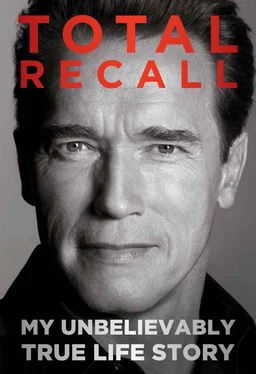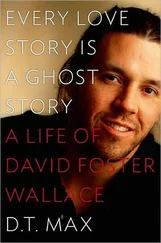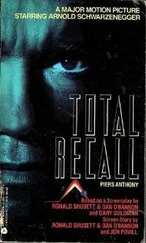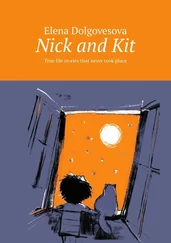The guy would ask, “What’s going on?”
“Well, I don’t have to tell you about Italians,” I’d say, rolling my eyes. “I don’t get it why he thinks this patio will cost eight thousand dollars. He wants to order x number of bricks, which is way more than we’re going to need. I mean, between you and me, I think we can build it for seven thousand. We’ll have all these extra bricks, and we can return them and get the thousand dollars back.”
The guy would start to trust me right away. “That’s really nice that you’re trying to give me the best price.”
“Well, we want to be competitive. I’m sure you got other estimates, right?”
“Oh, yes, yes.”
“You see, Franco?” I’d say. Then we would argue some more in German, and the guy would be happy with the $7,000 deal.
We loved bricklaying and felt very productive. We also had a lot of fun. One time a woman had a competing bid for $5,000 to get her chimney replaced. That included $1,000 to demolish the old one. “A thousand dollars?” said Franco. “Let me look at this.” He climbed up on the slope of the roof, braced his back against the shingles, and did a leg press that pushed over the whole chimney. It almost landed on the woman standing below. But instead of getting mad, she was grateful. “Oh, thank you so much for helping us! This was very dangerous. It could have fallen on somebody’s head.” She not only gave us the job but let us keep the old bricks, which I then sold to another customer as “vintage bricks.”
Another customer wanted to replace a wall around his house. We had the idea that demolishing the old wall would be strenuous enough to serve as our workout that day. We rented the biggest sledgehammers we could find. I told Franco that we should make it a contest. “You start at that end and I’ll start at this end,” I proposed, “and let’s see who gets to the middle first.” We were hammering like maniacs, and I would have won except that a chunk flew off the wall and broke the customer’s antique stained-glass window. There went our profit.
Franco and I hadn’t even been in business a year when a big earthquake hit the San Fernando Valley on February 9, 1971. Patios heaved up. Walls cracked. Chimneys fell down. You could not have asked for a better opportunity. Franco and I ran our advertisement in the Los Angeles Times right away, and we were busy around the clock. For extra hands, we recruited bodybuilders off the beach—at one point, we had fifteen of them mixing cement and carrying bricks. It was a very funny sight, but we couldn’t depend on the bodybuilders. They couldn’t handle working every day. Just like Joe said, some of those guys were lazy bastards.
With the money we made, Franco and I were able to buy better cars and pay for more college classes. We were also able to afford our first investment. In those days, the airlines were planning to introduce supersonic planes, and there was a proposal to build a supersonic airport in Palmdale, right over the mountains fifty or sixty miles northeast of Los Angeles.
I wanted to be rich very quickly. When I heard that, I said to myself, “This could be a great investment.” Sure enough, a month or two later, we got a copy of the local paper, the Antelope Valley Press , and right there on the front page was a magnificent rendering of the proposed airport: monstrous, very futuristic, exactly what I envisioned America was all about. To think big! In Graz, they used to worry about whether the airport should have three or four planes land a day. I said to myself, “This is major.”
I figured that when you build an airport on that scale, you’ve got to have warehouses around it, and shopping malls, restaurants, housing developments, government buildings—growth, growth, growth. So I said to Franco, “Let’s find out if there’s anything for sale.” It didn’t take long before the Antelope Valley Press had another front-page story about how companies were buying up huge plots and subdividing and selling the land.
A gentleman from a development company took us out to see a piece of property. At that time, Antelope Valley was undeveloped, just desert. It took us two hours to get there on the bus, and the whole way, the guy talked about the plans. He explained how they were going to build a freeway into Palmdale, and that the airport would be intercontinental. Ultimately, it might even be used for space planes. We were impressed. When we got there, he showed us where the power and water would go, which confirmed my sense that the opportunity was real. I bought ten acres for $1,000 apiece and Franco bought five, right next to where the runway was going to be and near where a complex of high-rises might be built. We didn’t have $15,000 in cash, so we agreed to $5,000 down and $13,000 in principal and interest payments over the next several years.
Of course, none of this took into account the issue of sonic booms and how they would affect people living under the flight paths. It became a huge fight, not just in the United States but around the world. Eventually governments concluded that airliners should go supersonic only over the oceans—and Franco and I ended up stuck with acres of desert. The developer kept insisting that all this was just a temporary setback. “Don’t sell it,” he said. “Your grandchildren are going to benefit.”
_
I wasn’t lying to Joe Weider when I said that Franco and I would both be champions. The speed with which Franco transformed himself into a world-class bodybuilder was truly amazing. As training partners, we had a big advantage. When we started working out together in Munich, there was no way for us to know much about what American bodybuilders were doing, so we had to learn on our own from scratch. We discovered dozens of training principles and techniques that we would write down. We were constantly on the lookout for new exercises and variations: it could be something as significant as the thousand-pound calf presses I learned from Reg Park, or as subtle as doing a curl with the wrist turned a certain way. Once each week we would choose an unfamiliar exercise and each do sets and reps until we couldn’t do any more. Then we’d analyze the next day which muscles and sections of muscles were sore, and note it down. Working this way, we spent an entire year making a systematic survey of our bodies and building an inventory of hundreds of exercises and techniques. (Eventually this provided the basis for the Encyclopedia of Modern Bodybuilding, which I published in 1985.)
A key discovery we made was that you can’t just copy someone else’s routine, because everyone’s body is different. Everyone has different proportions of torso and limb and different hereditary advantages and disadvantages. You can take an idea from another athlete, but you have to understand that your body may respond very differently from his or hers.
Experimenting like this helped us find ways to fix particular weaknesses. For instance, Franco had bowlegs, and we figured out how to fill out his inner thighs by having him do squats in a wider stance. Then we figured out techniques to build up his inner calves. He would never fool the judges into thinking his legs were perfectly straight. But they would be impressed by how he’d toned down the problem.
For the showdown with Sergio Oliva, I was determined to take my posing to a new level. Franco and I practiced our routines for weeks. To win, you have to be able to hit every pose for minutes at a time. Most bodybuilders will be able to do a vacuum pose, for example, which involves sucking in your stomach to call attention to the development of your chest. But often they can’t hold the pose, either because they’ve pumped up too much backstage or because they’re out of breath from previous poses. Or they have to let the pose go because they cramp up or start shaking.
Читать дальше












